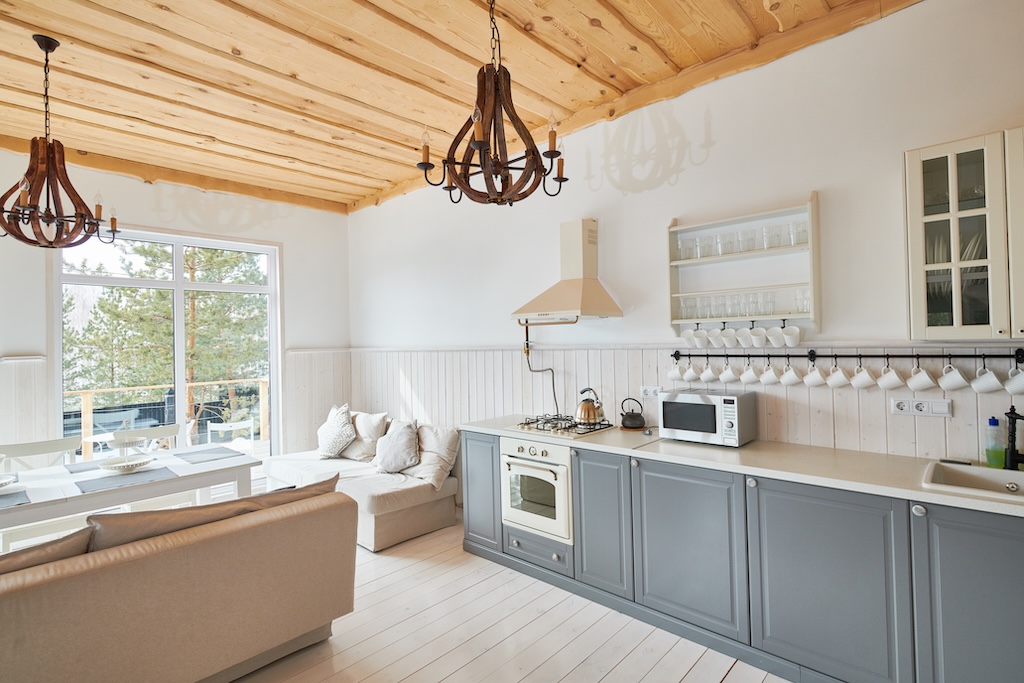Enhance Your Inside Design With Comprehensive Color Consultation
The combination of color assessment into interior layout provides an unique opportunity to improve and raise the psychological and visual resonance of an area. By involving with a skilled shade professional, you can navigate the complexities of shade choice, making sure that your options not just enhance architectural attributes however also reverberate with personal style and psychological influence.
Benefits of Shade Examination

Moreover, color appointment aids in maximizing natural light and enhancing spatial understanding. Lighter tones can make an area show up even more extensive, while darker tones produce an intimate setup. Cleveland Metro Painting Specialists. This critical application of shade can dramatically affect the overall atmosphere of any type of indoor area
Furthermore, expert consultants have a detailed understanding of classic classics and present patterns, guaranteeing that the selected colors will remain appealing in time. This foresight can save clients from pricey redesigns in the future. Color consultation encourages customers by offering them with a clear vision and direction, fostering self-confidence in their layout options and ultimately leading to a more successful and satisfying indoor style outcome.
Recognizing Color Psychology
The significance of shade psychology in interior decoration can not be overemphasized, as it looks into the emotional and psychological results that different hues can stimulate in individuals. Shades can influence state of mind, behavior, and also performance, making them a vital consideration in any design project.
As an example, warm colors such as red, orange, and yellow are usually connected with energy and heat. They can promote sensations of enjoyment and convenience, making them suitable for social rooms like living kitchen areas or rooms. On the other hand, awesome colors like blue, environment-friendly, and purple have a tendency to stimulate calmness and harmony, making them perfect for bed rooms or reflection areas.
In addition, the usage of neutral tones can develop a balanced setting by allowing the bolder colors to attract attention without overwhelming the senses. Recognizing these mental effects makes it possible for designers to create areas that not just look cosmetically pleasing but additionally advertise emotional well-being.
Integrating shade psychology right into interior layout entails a thoughtful selection of hues tailored to the desired function of each area, inevitably improving the overall experience for its residents. This recognition is important for achieving a harmonious and practical interior atmosphere.
The Color Wheel Described
It comprises primary shades-- red, blue, and yellow-- that can not be produced by mixing various other shades. Tertiary colors result from blending a primary and a secondary shade, leading to colors such as red-orange and turquoise.
The shade wheel helps developers understand the partnerships between shades, including complementary, comparable, and triadic plans. Corresponding colors, located contrary each various other on the wheel, develop dynamic contrasts that can stimulate a room.
Utilizing the color wheel in interior style not just enhances aesthetic allure but likewise stimulates certain emotions and environments, making it an important referral for color assessment. Comprehending these relationships eventually encourages developers to create areas that are both useful and aesthetically fascinating.
Selecting the Right Combination
An appropriate color plan can link a room, boost its functions, and stimulate preferred emotions. Different spaces serve different look here functions and require palettes that reflect their desired usage; for circumstances, serene shades such as soft blues or environment-friendlies function well in bed rooms, promoting leisure.
Light can drastically alter just how colors show up, so it is necessary to examine the room at different times of the day. An unified combination must enhance these functions, developing a cohesive appearance throughout the space.
When selecting shades, use the 60-30-10 rule, which recommends that 60% of the space must be a leading shade, 30% a secondary shade, and 10% an accent color. This ratio ensures equilibrium and visual passion (Cleveland Metro Painting Specialists). Example colors on the wall surfaces prior to dedicating, as this permits you to see how the colors interact with one another and the total ambiance they develop in your interior layout project.
Collaborating With a Shade Consultant

When dealing with a color expert, the process generally begins with a first assessment. During this meeting, you'll review your vision, choices, and the existing aspects in your space. The expert will certainly assess your demands and may advise specific shade palettes that line up with your goals.
After developing a direction, the professional will provide examples and aesthetic aids to assist you visualize the proposed color systems. This action is crucial, as shades can show up in a different way under varying lighting problems.
In addition, a shade expert can direct you in selecting corresponding Source home furnishings, artwork, and devices to balance with your selected palette. By collaborating very closely, you can accomplish a refined visual that elevates your insides and produces an inviting ambience. Ultimately, the knowledge of a Clicking Here color expert can dramatically enhance the general effect of your style task.
Final Thought
In recap, extensive color appointment serves as an important device for boosting indoor design. By leveraging professional expertise of shade psychology and spatial dynamics, a tailored color combination can be created to stimulate particular feelings and develop an unified environment.
By engaging with a seasoned color expert, you can browse the intricacies of shade choice, making certain that your choices not only complement architectural functions however additionally resonate with personal style and mental effect. It makes up primary shades-- red, blue, and yellow-- that can not be developed by mixing other colors.The color wheel helps designers understand the relationships in between shades, consisting of complementary, analogous, and triadic plans.When selecting colors, make use of the 60-30-10 regulation, which recommends that 60% of the area must be a leading shade, 30% a second shade, and 10% an accent shade. By leveraging professional understanding of color psychology and spatial dynamics, a customized shade scheme can be created to stimulate certain emotions and create an unified setting.